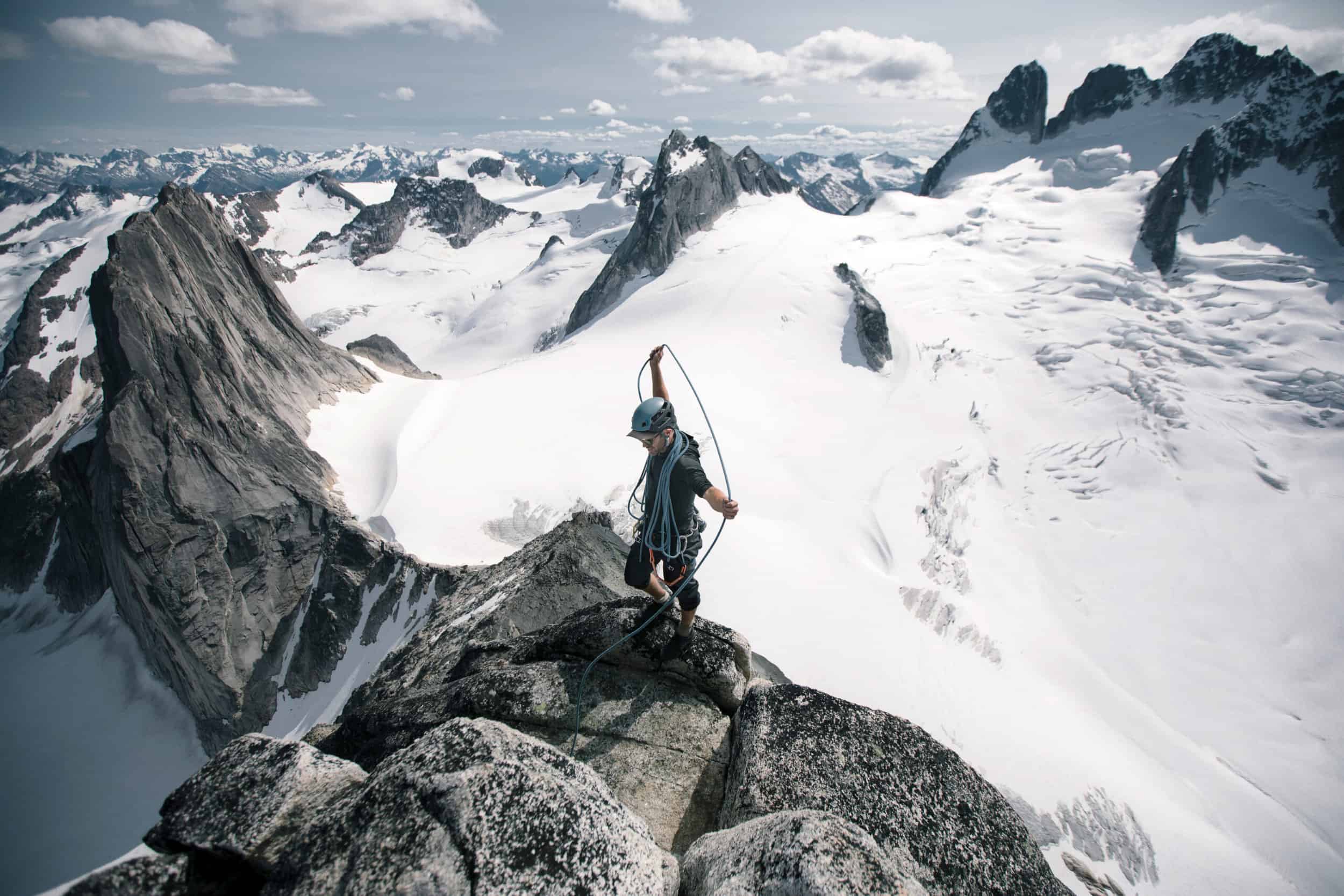Read The
Current Issue
Jackson’s Unsung Mountain Athletes
Some of the valley’s best athletes don’t advertise their adventures.
// By Molly Absolon
The Teton Range attracts mountain athletes from around the world to test their skills. (We’re looking at you, Kilian Jornet.) But the range also breeds its own home-grown superstars. Some of these individuals go on to become famous in the outdoor world (like Jimmy Chin, Kai Jones, Crystal Wright, Hadley Hammer, and Lynsey Dyer), but even more continue to do extraordinary physical challenges with little or no accolades or Instagram fame. They are people with full-time professional careers who, on their days off, put up first ascents, set speed and distance records, and conceive of and do feats so seemingly out-there and outlandish that they hadn’t crossed anyone’s mind before. Meet five of these unsung local adventurers. They range in age and in how they physically challenge themselves, but share the fact that being outside plays an important role in their drive toward excellence and is a critical part of their wellbeing and health.
Charlie Thomas
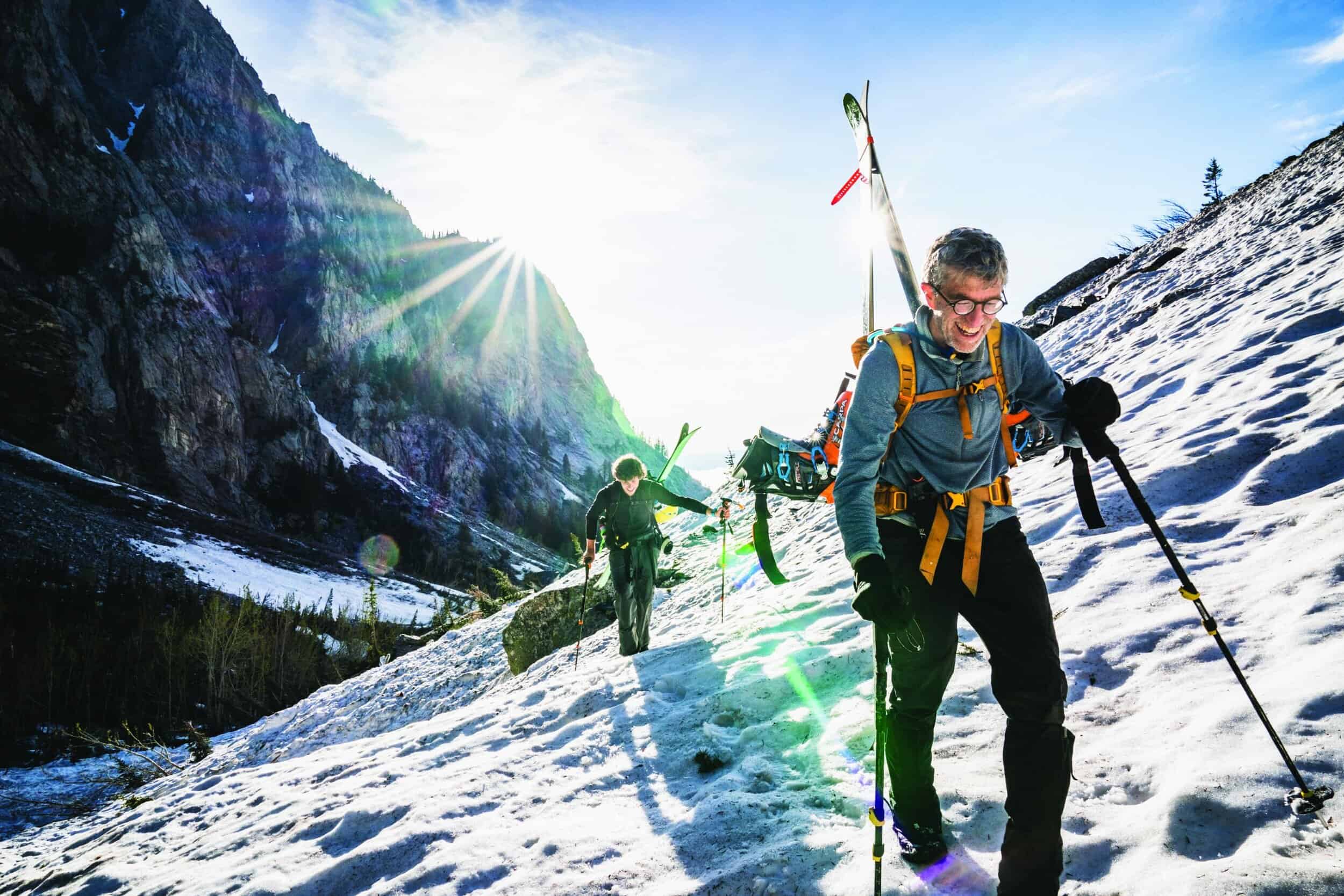
The rumor around Jackson Hole is that Charlie Thomas, who is now 62 years old, has used up a few of his nine lives. Thomas first came to Jackson Hole in 1978 to do a senior project for high school that he says was mainly about staying out of trouble, and he admits he had some close calls in his early days in the outdoors. Most of those near-misses stemmed from ignorance. He learned his outdoor skills through trial and error. “I was clueless,” he says. “I had to figure it out. That’s pretty much how I learned to do sports.”
On his first climbs, he used seatbelt webbing for his anchors, tying straps together with overhand knots that often came loose. Eventually another climber took pity on him and showed him how to do it right. His first kayak adventure included an unplanned scoot over a river-wide ice shelf, his hands in dishwashing gloves and a garbage bag over the boat’s cockpit. He dropped his only flashlight after getting benighted on the descent from Teewinot. Despite his ignorance, he always landed on his feet and, in the process, became a skilled outdoorsman—so skilled he was one of the early kayakers to paddle the Box Canyon of the Clark’s Fork of the Yellowstone River, which is still one of the most challenging multiday whitewater runs in North America.
But he almost didn’t land on his feet on one of his descents of the Box. In 1993, he was with a group of Jackson kayakers in the canyon. They were in a celebratory mood after figuring out a way to paddle through a section no one had boated before. With that piece of the puzzle in place, the run, which had originally required as many as 17 portages, was down to five spots where you had to get out of your boat and walk (or climb) around. Thomas missed one of the five. “I was fighting the flu,” he says. “So, I wasn’t operating on all cylinders. I pulled into an eddy above one of the portages, and I guess I forgot where I was. I pulled out and suddenly it was like I was going over the edge of the world.” Water yanked Thomas out of his boat immediately. He remembers flashes of light and dark. Later he realized the light came when he tumbled over waterfalls, and the dark was when he was pulled underwater. Then he popped up. He was totally unscathed. His boat, however, had been torn in half.
“I was clueless. I had to figure it out. That’s pretty much how I learned to do sports.”
In the second miracle of the day, there was an abandoned kayak on the shore nearby that Thomas and his friends had found the year before. That boat—and a roll of duct tape—allowed him to paddle safely out of the canyon. “That was a bit of an awakening,” Thomas says. “I remember thinking, I have kids. I can’t do this. I never took risks like that again.”
Thomas has been married 35 years and has two adult children, both of whom share his passion for the outdoors. For his day job, he’s a woodworker and makes beautiful fine furniture, but all his spare time is spent exploring. Over the years, he’s collected countless first ascents of peaks and first descents of rivers in the Greater Yellowstone area, although he says his name isn’t always linked to those objectives because he and his friends often didn’t bother to record their accomplishments. To Thomas, first ascents are all about the adventure, not the glory. “I don’t think it’s an adventure if you know what is going to happen,” he says. “With real adventures, you don’t know the outcome.”
Bruce Hayse
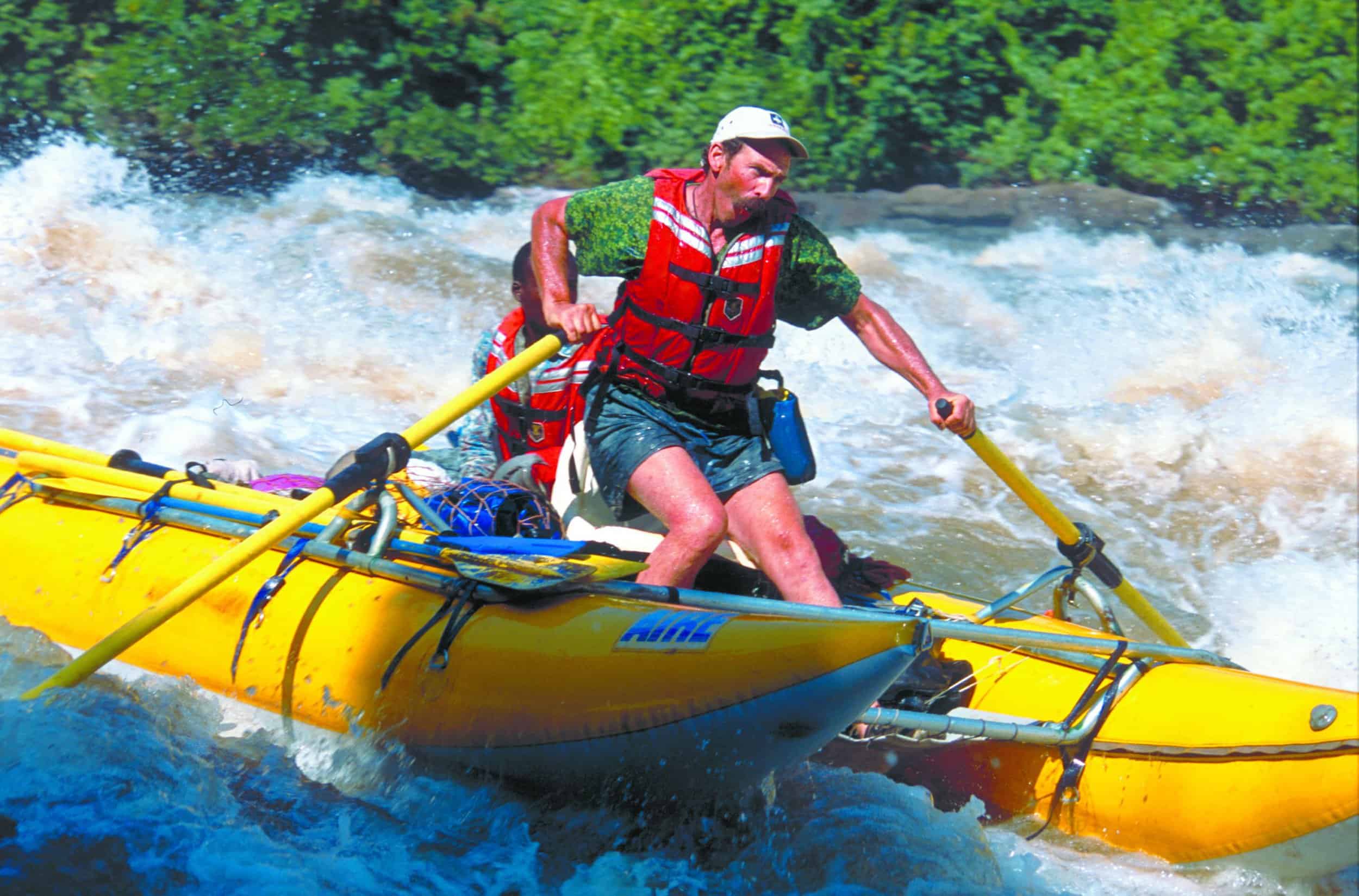
Bruce Hayse’s outdoor adventures sound like a movie. Born in 1949 in eastern Oregon, he spent his childhood camping in the mountains, worked for the Forest Service, and was a mule packer. He says as a kid, he wanted to be outside all the time and would sleep in his yard if he couldn’t get farther away.
In 1979, he helped start the environmental group EarthFirst! in response to the degradation he and others were seeing in wild places across the American West. In the following decade, he began carrying a 45-pound inflatable double kayak into the wilderness to paddle streams no one had tried before. Hayse is also a doctor—he established his family-medicine practice in 1983 and still sees patients at an office on W. Broadway Avenue in downtown Jackson today. Plus, he’s a husband; the father of two grown daughters; and an avid backcountry skier, hiker, and boater.
Hayse always chooses the most untraveled path he can find. He doesn’t want information about an objective before he goes, preferring to figure things out on his own. To feed that drive for the unknown, he started taking a yearly adventure vacation to Africa in the late 1980s, where he ran rivers for which he had no map, no GPS, and no guidebook. One river appeared to have a single waterfall from the information his team gathered. It had four. All the rivers required his party to navigate challenging rapids, make long, arduous portages around unrunnable sections, and deal with poisonous snakes and dangerous hippos. He also got sick from malaria and survived tsetse flies. His expeditions are athletic endeavors in that they require fitness, expert skill, and hard work, but more than an athlete, Hayse considerers himself an explorer and is driven by his passion for the natural world and love for the beauty of the places he visits in a boat, on foot, or on his skis. “I guess I go seeking enlightenment,” Hayse says. “You can find it lots of different ways. For me, being in nature doing intense things is one way to expand my mind and learn to live in the world.”
“For me, being in nature doing intense things is one way to expand my mind and learn to live in the world.”
Hayse says the biggest dangers he has faced on his adventures came from humans. He was taken hostage in Africa not once but twice. The second time, his captors threatened to cut off the heads of two native men traveling with the group. Hayse, who was carrying a satellite phone, told his captors if he didn’t call in regularly, the U.S. government would bomb the area. His story was a lie, but it worked.
Hayse says he thinks there is less mystery in the world now, because we have information about everything, and that makes him sad. For him, trips into wild places have always been about the unknown. “My athletic endeavors were never based on personal achievements,” he says. “I was really focused on my love of the universe manifested through the love of nature.”
Jen Reddy
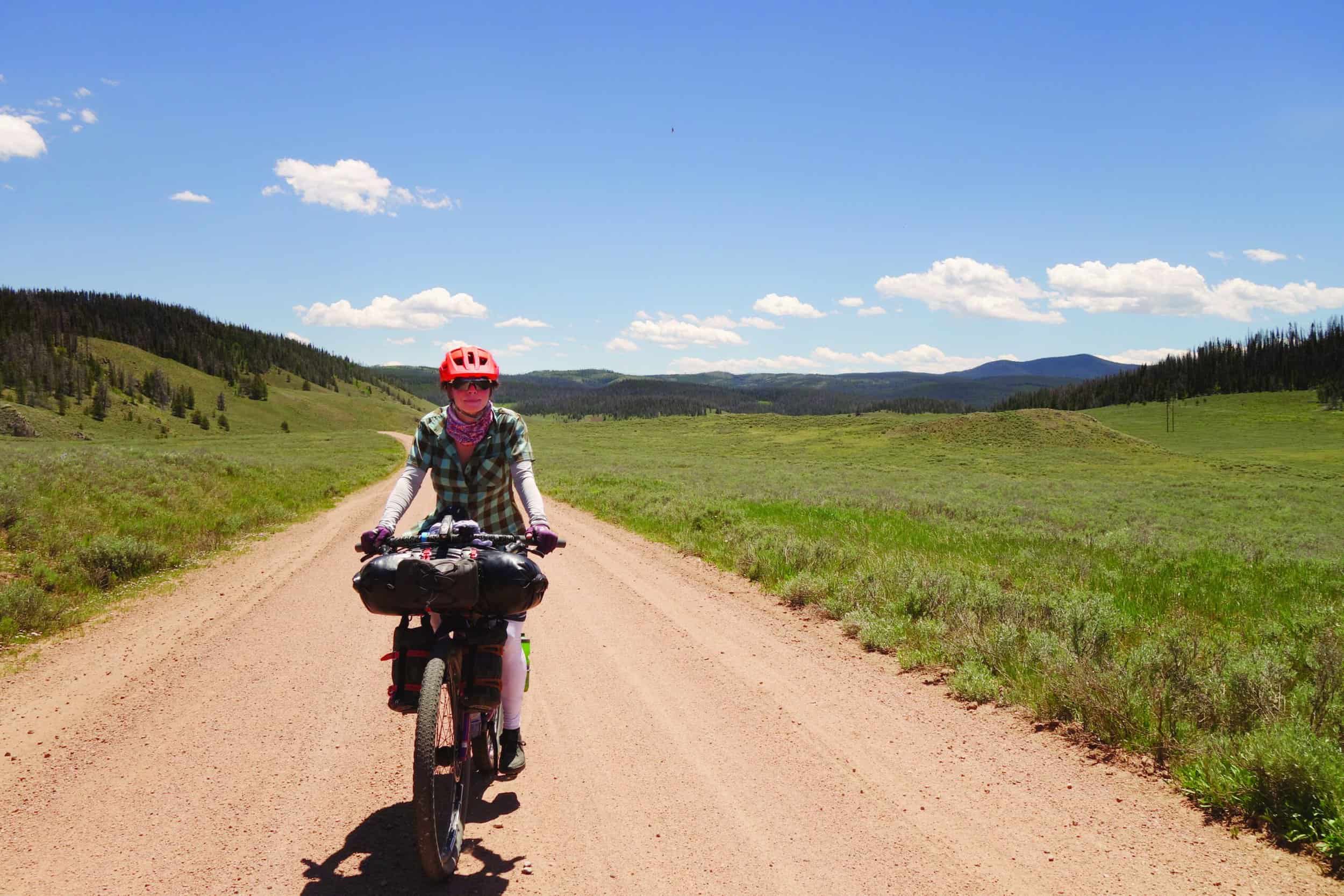
Jen Reddy’s name is familiar to many in the Jackson area. She’s a member of Teton County (Wyoming) Search and Rescue, part of TCSAR’s short-haul team, an avalanche instructor, and a talented freelance illustrator (find her work at jenreddyink.com and on stickers plastered around town). She’s also an endurance athlete who quietly chalks up notable accomplishments on her bike and skis.
Reddy moved to Jackson 20 years ago to pursue ski mountaineering, and much of her early focus was on ticking off challenging lines in the Tetons. A former ski racer from the East Coast, she fell in love with powder and the vastness of the West’s mountains, and sought out objectives that were difficult but also aesthetic and unknown. “I pour over maps and Google Earth looking at the landscape, trying to find projects that are interesting and eye-catching,” Reddy says. “I love exploring.”
About four years ago, Reddy went bikepacking—think backpacking, but you carry all your gear on a bicycle—for the first time. That experience tapped into the same sense of exploration she felt in ski mountaineering. Again, she found herself spending hours looking at Google maps, piecing together dirt roads. “I like to find routes that take me through terrain I wouldn’t see otherwise,” Reddy says. “Bikepacking appeals to me because you can cover a lot of country more quickly than you can on foot. The silver lining of Covid forcing us to stick closer to home is that, after 20 years living in Jackson, I’m going places close by that I’ve never seen before.”
“Bikepacking appeals to me because you can cover a lot of country more quickly than you can on foot.”
Reddy’s excursions, many of which she does solo, are long and arduous, although you wouldn’t know it from talking to her. She says she does not seek external acknowledgement, rather she looks for a depth of experience a lot of people don’t get in life. “I like to see what I can do,” she says. “There is such richness in being outside working hard. I feel sheer joy when I have finally completed a route. Before that, it’s all about perseverance. Just putting one foot in front of the other.”
Reddy says she used to be driven by competition, but that shifted six years ago after her husband died by suicide. At first, after his death, long bike rides or long hours on skin tracks were terrifying because of the silence she was forced to endure, but that has changed. Now she finds that silence healing. “I used to be super competitive,” Reddy says. “Pushing myself was about aggression, force. Now it comes from a place of compassion. It’s softer. It’s more, ‘Of course you can do this,’ instead of, ‘You have to do this.’”
Ryan Burke
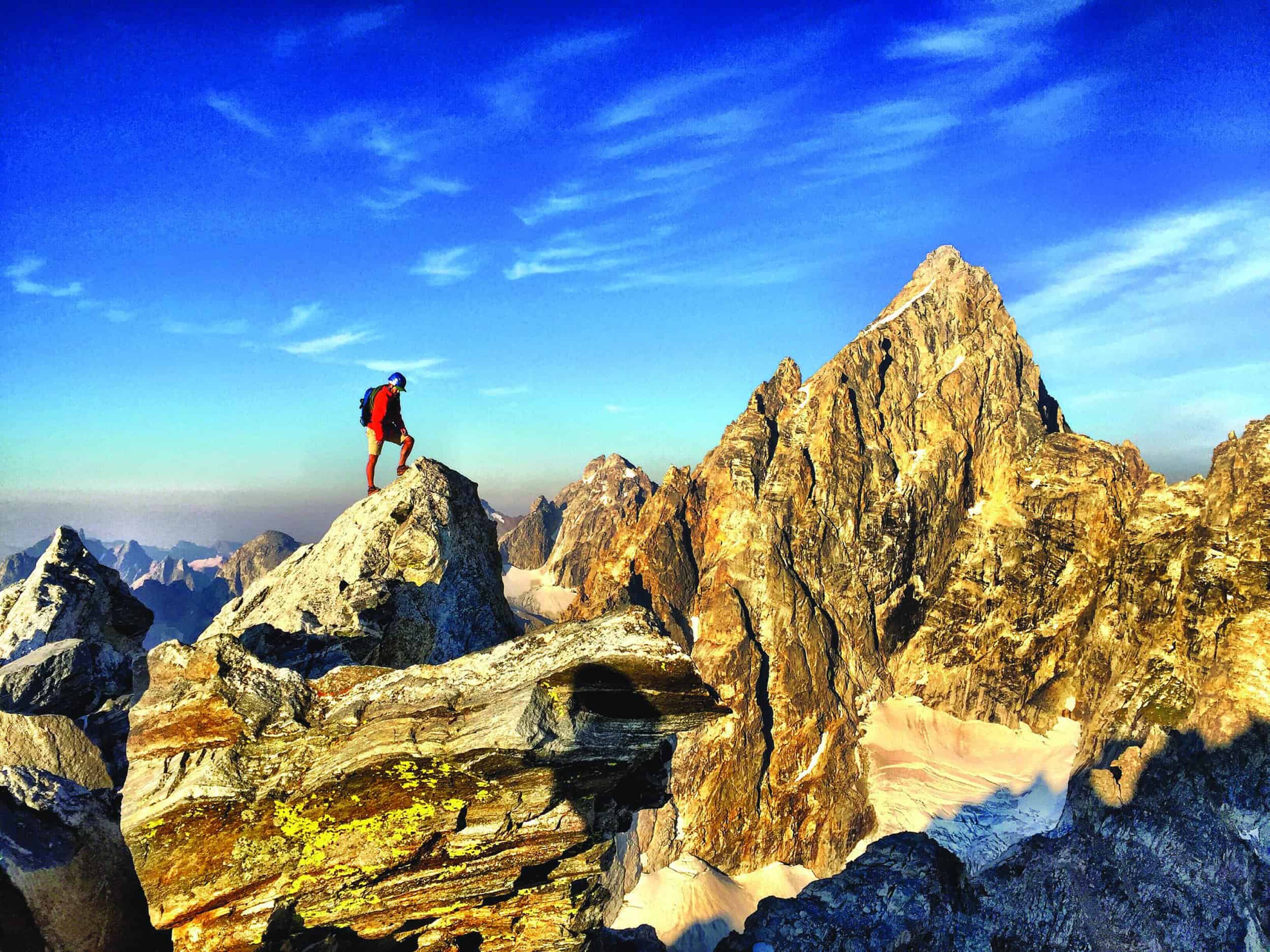
Ryan Burke, 40, is a mental health counselor in private practice who specializes in helping people cope with addiction. He says his work inspires him in the mountains. Burke figures if people can face the daily, lifelong challenges of living with addiction, he can get through whatever temporary, self-inflicted challenge he chooses to pursue in the Tetons.
In the summer of 2014, Burke completed the Picnic, the Moranic, the Buck Mountain Triathlon, and his own creation, the Around-the-Clock triathlon, which included a 114-mile bike ride, a five-and-a-half-mile swim around the circumference of Jenny Lake, and a run from Paintbrush Canyon to Teton Pass over four mountain passes. It took 30 hours. The following year he did what he calls the Perception Traverse, another invention of his, which included 22 Teton peaks, 82,000 feet of vertical, and 65 miles. He did it in four days. In 2016, he did a seven-day traverse—which he named the Fight or Flight Traverse—that included summiting 50 Teton peaks with 102 miles of hiking, running, bushwhacking, and scrambling up and down 122,000 vertical feet. Burke has climbed the Grand Teton three times in a single day and traversed the spine of the Wind River mountains in a week.
Ryan has taken the mental and physical lessons learned in the mountains to help create a wellness program called MindStrength Project.
The evening after his first Picnic—when most people would be on the couch resting on their laurels—Burke played a game of soccer with some friends. That made him realize he probably could have gone farther and faster, and so began his hunt for the next big test. He’s taken the mental and physical lessons he learns in the mountains to help create what he calls the MindStrength Project, a neuroscience-based wellness program that helps people create healthier habits and resiliency. He offers the program on a sliding scale, asking that his clients pay only what they can afford.
Burke says his work, rewarding as it is, still drains him, so his adventures in the mountains are like a cleanse. He returns hungry, skinny, and ready for more—at least after he’s eaten a lot of pizza and ice cream. “I used to think I had to prove something,” Burke says. “Prove it to myself, to get the girl… Now I’m married, and all I get from her is a shoulder shrug. My motivation has shifted. It’s now more of an emotional release valve from the despair I hear as a therapist.”
Julia Heemstra
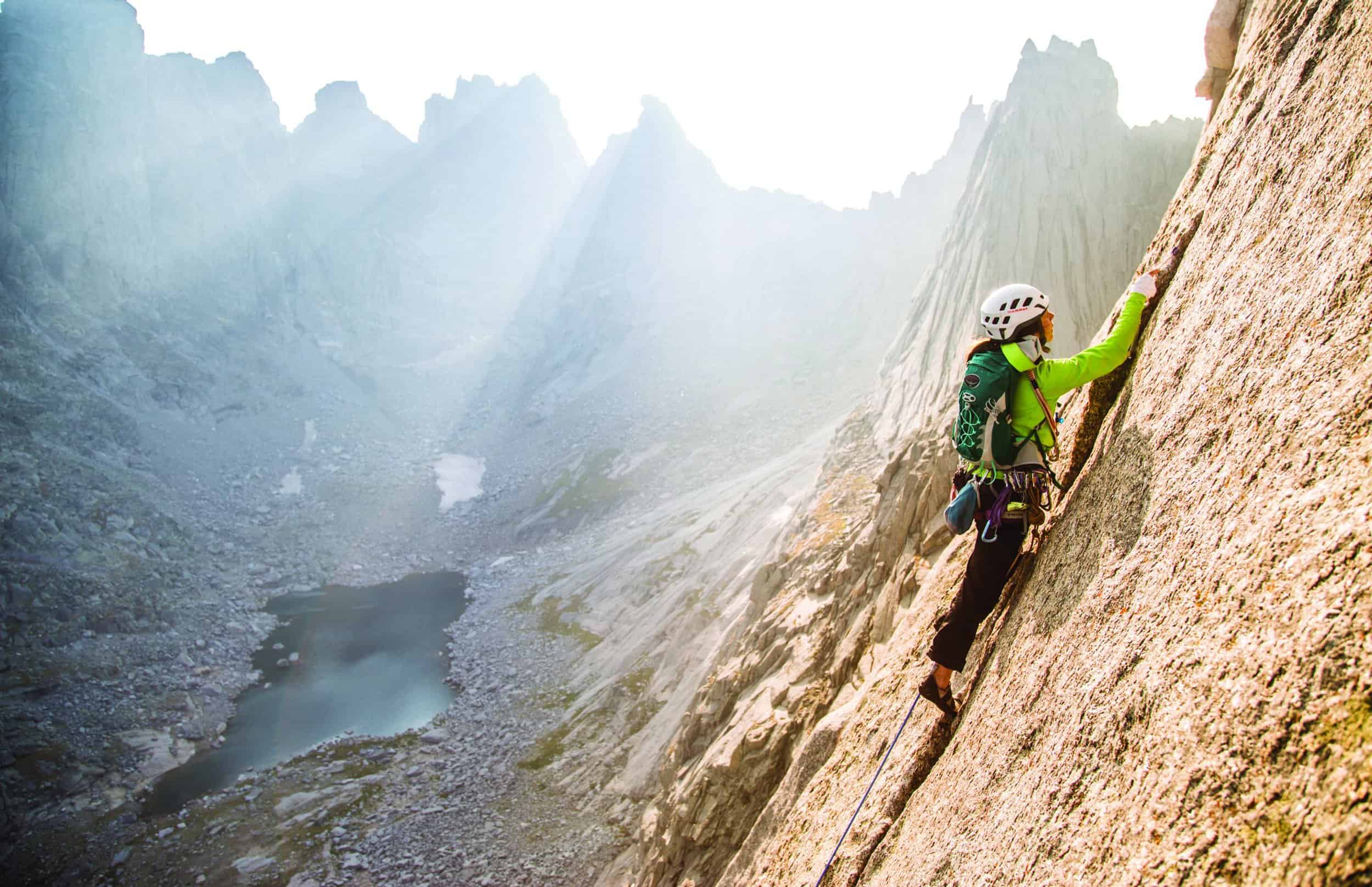
Julia Heemstra has always been an athlete. she grew up swimming and running competitively, and learned to climb in her teens. When she moved to Jackson after college, she fell into the typical Teton rosutine: climbing in the summer and backcountry skiing in the winter, all while working as the director of the wellness department at St. John’s Medical Center. She says she felt competent and comfortable in the mountains, but her accomplishments didn’t really set her apart from all the other mountain athletes running around the Tetons, until she decided to try the Grand Picnic (see sidebar, p 112). “I was curious really,” Heemstra says. “I wanted to see what I could do.”
What she could do was become the first woman to complete the route solo and unsupported, earning the record for fastest-known female time in the process. Less than a month later, she tackled the Moranic (see sidebar). Again, she was solo and unsupported, and this time she not only became the fastest woman, she became the fastest person, smashing the existing record by over an hour.
Heemstra downplays her accomplishments. She says she wasn’t out to break records. She just wanted to complete the routes safely and in good style. “To be honest, I felt as if I had to make my peace with Mount Moran and Leigh Lake,” Heemstra says. She’d had an epic on the mountain early in her career, spending two and a half days on a route she and her partner had expected to finish in one. They ran out of water and food before finally making it to the bottom safely. Later, in 2014, she was crossing Leigh Lake after a ski descent on Mount Moran, when she and another member of her party broke through the ice. They were 400 feet from shore. Every time she tried to clamber out, the ice would break away in front of her.
“I was pretty sure this was the way I was going to die,” Heemstra says. But another member of their party pushed his skis across the ice, giving Heemstra something solid to pull on, and she, and the other individual who’d punched through, were able to get themselves out. Those two events weren’t her first encounter with risk in the mountains. She’d also been humbled by the loss of her longtime boyfriend, Steve Romeo, who died in an avalanche in 2012. She knows all too well just how serious mountain adventures could be. One misstep, one miscalculation, one lapse in judgment is all it takes to turn a fun day into an epic, or worse. As a result of this knowledge, Heemstra says, she doesn’t rush to move quickly. Her speed comes from being methodical and prepared. “I’m moving fast only because I never stop moving,” Heemstra says.
Heemstra grew up in South Africa, moving back to the United States for high school and later college. She has always felt drawn to the country where she spent her childhood, and she’d return to South Africa often to visit her father who lived there until his death a few years ago. The discrepancy between her life in Jackson and the life she saw so many people living in South Africa began to wear on her, however. She felt she needed to get involved in something that was bigger than herself and that had more meaning than a speed record in the Tetons.
She stumbled upon her most-recent project when she learned that schools in many parts of South Africa did not have clean water, which meant they were forced to close their doors, leaving thousands of children without access to education. She connected with a nonprofit that gave her 10 water filters to take to South Africa. Those filters helped get 6,400 students back in school. Heemstra was on fire. Suddenly she’d found something that fed her desire to make a difference. She even figured out a way to use her mountain skills to help her cause. In 2021, she climbed the Grand Teton seven times in 29 days to draw attention to her work and raise money to complete water repairs at seven schools in South Africa. Heemstra says the Tetons give her energy to pursue her philanthropic work.
“The mountains restore my heart and soul,” Heemstra says. “My perspective on what my athletic accomplishments mean has changed. I come back from South Africa so depleted. I get tons out of my work there, but it’s hard and exhausting. The mountains are what heal me. And then I’m ready to go back again.” JH
Trialathons, Jackson Hole-Style
An unsanctioned, human-powered multisport “suffergasm” (as its creator David Gonzales calls it on his website), the Grand Picnic has become a test piece for Jackson Hole athletes. Spin-offs of the original version include the Moranic and the Buck Mountain Triathlon. The purest version of these mountain triathlons—all include a bike, swim, and hiking/running/climbing component—is to complete the prescribed route and then reverse it while carrying all of your gear and without any outside support.
The Grand Picnic
Ride 23 miles from Jackson’s Town Square to South Jenny Lake in Grand Teton National Park.
Swim 1.3 miles across the center of Jenny Lake to the Valley Trail on the western shore.
Hike/run/climb 10 miles up 7,000 vertical feet to the 13,770-foot summit of the Grand Teton.
• Do everything in reverse.
• First completed by David Gonzales in 2012.
• Fastest known time (FKT): Male, Adam Wirth, 11 hours, 12 minutes. Female, Julia Heemstra, 14 hours, 47 minutes.
The Moranic
Ride 25 miles from Jackson’s Town Square to the Leigh Lake Trailhead in Grand Teton National Park.
Hike 1.5 miles to Leigh Lake from the trailhead.
Swim 2 miles across Leigh Lake to the base of Mt. Moran.
Hike/run/climb 6 miles up 6,100 vertical feet to Mount Moran’s 12,610-foot summit.
• Do everything in reverse.
• First done by David Gonzales in 2015.
• Fastest known time: Female, Julia Heemstra, 16 hours, 13 minutes. Male, Danny Beasse, 17 hours, 30 minutes.
When They Aren’t Going Big…
Bruce Hayse
Favorite place to get lost:
• Somewhere in Yellowstone National Park
Charlie Thomas
Favorite two-hour adventure:
• Old Pass Road to climb the big rock, hike the History Trail, bike up the road, or ascend the ice-climbing tree (a dead tree Charlie climbs with crampons and ice tools)
Julia Heemstra
Favorite place for a long runs or hike:
• Northern Gros VentreMountains
Jen Reddy
Favorite gravel ride:
• Gros Ventre Mountains around Fish Lake Mountain southeast of Togwotee Pass
Ryan Burke
Favorite climb:
Direct South Buttress, Mount Moran, Grand Teton National Park
Favorite hike:
Symmetry Spire, Grand Teton National Park
Favorite run:
Sink or Swim Trail, Snow King Mountain

